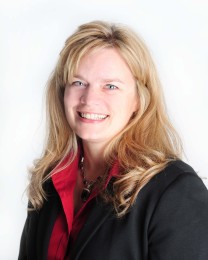AMES, Iowa – It happens in small towns across Iowa and the country. A long-time business must close its doors because it has no successor, leaving a community with the empty storefront of a shop that once offered a product or service, jobs and philanthropic support.
The vitality of rural economies depends as much on maintaining these existing businesses as attracting new ones, said Iowa State University economic and small business experts. Even though resources are available to assist with business succession, several factors can complicate plans to sell or pass on the business to an heir. In rural communities, location and declining population are obstacles.
“Succession can be challenging even when an owner has an heir in mind to take over the business. Sons or daughters go off to college and are not always interested in going back to small town Iowa to run the family hardware store,” said Georgeanne Artz, an assistant professor of economics.
Artz has studied differences between rural and urban entrepreneurs to understand how location affects business creation, succession and income. There is a perception that urban areas are better for business, but Artz’s research shows that is not always the case. After controlling for factors such as education and cost of living, she found relatively little difference in pay and an advantage for rural entrepreneurs who have location-specific capital.
“Rural entrepreneurs who go home to start a business have location-specific capital. It is a knowledge or skill set they acquire by growing up in the area,” Artz said. “That knowledge is more than just preference for the rural setting. It’s productive and makes it easier for them to start business than someone who didn’t grow up there.”
Using this research, state and local governments could develop effective recruitment strategies to target entrepreneurs more inclined to be successful in rural areas, Artz said. As an example, Artz says high schools could offer entrepreneurship programs that encourage students to come back after college and start or take over an existing business.
Taking advantage of existing opportunities
According to a 2017 America’s Small Business Development Center study, 59 percent of Millennials said with the right idea and resources they would start a business. While many entrepreneurs gravitate to urban areas, there is tremendous opportunity in Iowa to start a business or purchase an existing one, said Lisa Shimkat, state director for Iowa SBDC, which is part of ISU’s College of Business.
“We encourage a lot of young entrepreneurs to approach existing business owners to see if they would be interested in selling,” Shimkat said. “We’ve had several cases in which the business owner was on board. It just took someone to approach them with the idea.”
For business owners without a successor in mind, it is a welcome opportunity. Shimkat says owners are often willing to train their successor and negotiate a fair price to make sure the business continues to thrive. SBDC can help both young entrepreneurs and existing business owners navigate the process – assessing business value, identifying funding, creating an exit strategy – to guarantee a successful transition.
Nearly 70 percent of family businesses do not have a succession plan, according to Iowa SBDC’s 2017 State of Small Business and Entrepreneurship. The average business owner in Iowa is 50 years old and more than 14,000 business owners are 70 or older. Shimkat says these numbers not only highlight the opportunity for young entrepreneurs, but the potential impact if a majority of these small businesses would close.
Succession for continuity
Succession is not only a concern for small business. Peter Orazem, University Professor of economics, says many communities are facing a transition in leadership as more baby boomers retire.
“We are finding several communities do not have a natural succession plan for people to take over leadership roles in transportation, planning or legal departments,” Orazem said. “It doesn’t matter if it’s a city government with 600 employees or a firm with 25 people. It is hard to guarantee continuity if there is no succession plan.”
Orazem says government agencies and businesses alike can learn from examples such as Ames National Corporation, a multibank holding company, on how to develop an effective succession plan. This spring, Orazem advised a student team that analyzed the corporation’s plan for a national banking competition.
Orazem says ISU students identified key acquisition and succession strategies that have been mutually beneficial for Ames National and its community banks:
- Training internal talent for leadership roles to maintain company culture and values
- Sharing resources to reduce burden of regulatory requirements
- Maintaining local bank branches to diversify portfolio and indirectly benefiting rural businesses
Following the 2007 recession, Orazem says many small banks sought buyers because of increasing competition and the high cost of complying with new regulatory requirements. This put several rural communities at risk of losing bank branches.
“A concern for all community banks in small, rural towns is there’s a critical number of customers or business that it must generate in order to meet its fixed costs,” Orazem said. “If a bank can’t hit that threshold, then it can’t be competitive in a market that’s much more fluid.”
Succession is a difficult and emotional issue for many business owners to address. Shimkat says some owners feel that developing a plan in advance is too final. However, life circumstances can change unexpectedly, which is why Shimkat encourages business owners to start thinking about an exit strategy the day they open their doors. Doing so will benefit the business and the community.
“We know that as small communities start losing these businesses, it makes it harder and harder to recruit people to live and work there,” Shimkat said. “We need to keep these communities strong and it takes small businesses to make that happen.”


